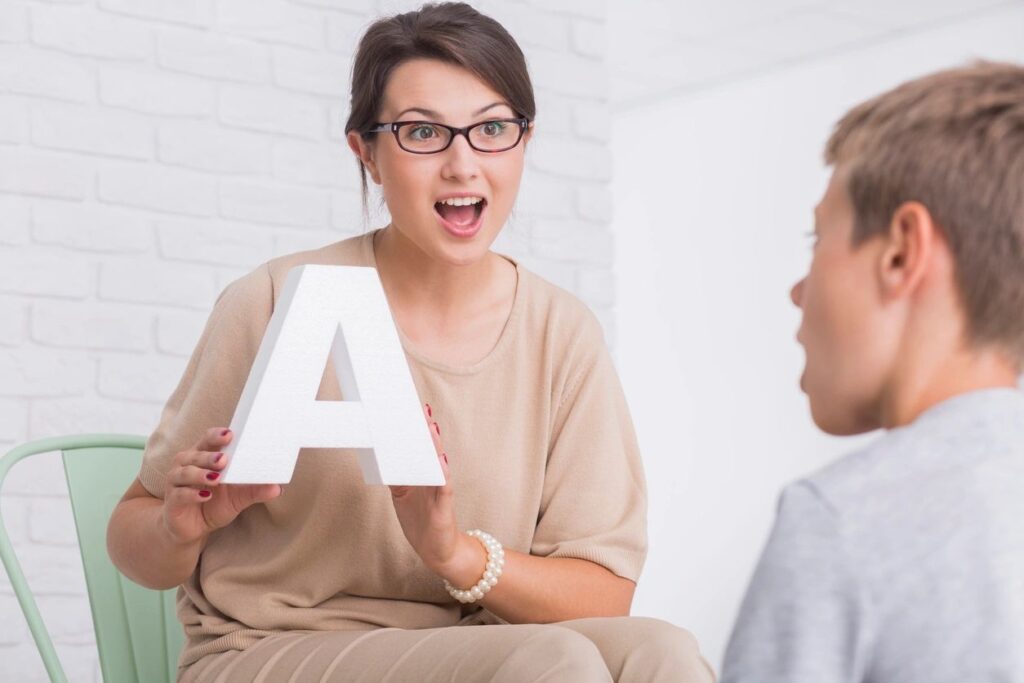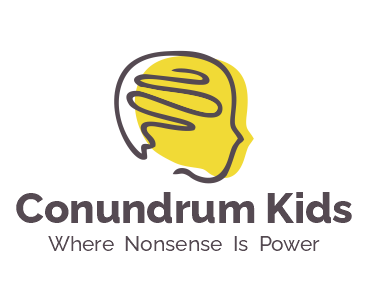This Is Amazing!
Doctor Dyslexia Dude
Creative Brilliance
Signs of Dyslexia

Dyslexia symptoms include:
- Difficulty learning new words
- Delayed speech development
- Difficulty with rhyming words
- Confusing letters for each other
- Reading below the expected level for age
- Grammar issues
- Problems spelling
- Poor sentence structure
- Lack of phonemic awareness
- Avoidance of reading aloud
- Difficulty copying words from a secondary source

In addition, there are subtle behavioral signs to watch for in children with dyslexia, including:
In addition, there are subtle behavioral signs to watch for in children with dyslexia, including:
- Withdrawal from peers
- Depression
- Misbehavior or acting out
- Self-esteem issues
- Peer and sibling relationship difficulties
- Loss of interest in school
- Appearing unmotivated or lazy
Recognizing early symptoms of dyslexia can help diagnose the disability sooner, providing a more significant overall opportunity to improve.
Dyslexia Paradox
Waiting To Fail
My personal experience with the dyslexia paradox comes as a father of a dyslexic child. Our 10-year-old daughter was first pulled out for reading intervention in the first grade. Despite my pediatric training, I was ill-equipped to understand and evaluate what screening and interventions the school was providing her, and I trusted that the school would teach her how to read. By the middle of second grade, after 18 months of intervention without improvement, my pediatrician spidey-sense told me it was time to get her privately tested. She seemed to be on the wait to fail trajectory which occurs when “children at risk for dyslexia have to experience considerable failure before receiving appropriate intervention.”
Effects of Delaying Identification
Dyslexia is a Superpower
A Father and Pediatrician Gives His Personal Take
“There is robust evidence linking lack of reading proficiency with school failure, negative impact on meaningful employment, increased risk of involvement in the criminal justice and welfare systems, as well as mental health consequences of reduced self-esteem, anxiety, and depression.”

The Dyslexia Problem Isn’t About Knowing How to Help. It’s Finding Who Needs Help, and Then It’s a Race Against Time.
Sally Shaywitz most recently testified on how best to improve the identification and treatment of dyslexic children to: New York City Schools Chancellor Carranza; to the Rockefeller Institute of Government and members of the New York State legislature in Albany, NY; and before the Georgia State Senate Committee on Dyslexia. In her testimonies, Dr. Shaywitz points out that while we are always seeking new knowledge, in the case of dyslexia we have sufficient knowledge to do more. Rather than a knowledge gap, in dyslexia there is an action gap. We must take action to implement the deep knowledge we have of dyslexia and ensure that this knowledge is translated into policy and practice to benefit dyslexic children and adults.
September 24, 2020
The True Gifts of a Dyslexic Mind
What is Dyslexia, and How is Stealth Dyslexia Different?

Renowned dyslexia experts, Drs. Brock and Fernette Eide, physicians from Edmonds, WA, are the pioneers who first discovered the notable stealth dyslexia subcategory of dyslexia close to 20 years ago and continue to be leading experts in the field of dyslexia.
Adapted from publications by and citing Drs. Brock and Fernette Eide is a description of some of the differences between stealth dyslexia and dyslexia:
In addition to reading problems, dyslexia can also include problems in the following areas:
- Handwriting
- Oral language
- Math
- Motor planning & coordination
- Organization
- Sequencing
- Orientation to time
- Focus & attention
- Right-left orientation
- Spatial perception
- Auditory & visual processing
- Memory

What is different about stealth dyslexia?
Reading skills that appear to fall within the normal or even superior range for children their age, at least on silent reading comprehension.”
“…[C]hildren with stealth dyslexia often show persistent, though subtle, difficulties with reading. Despite the appearance of age-appropriate reading comprehension…[t]hese deficits usually result in subtle word substitutions or word skips, and they can result in significant functional problems, especially on tests. We frequently see children who consistently show good comprehension reading lengthy passages or even long books, yet who significantly under-perform or even fail written tests of reading comprehension because they have difficulty reading short test questions or multiple-choice answers.”
“When reading longer passages, they can often use their excellent higher-order language skills to fill in or correct errors in word reading, drawing on the redundancy and contextual cues that are usually available in longer passages. However, short passages contain fewer contextual cues. They have less redundant content, and they often have more condensed syntax, providing fewer means of correcting individual word errors. Therefore, the likelihood of errors increases as passages decrease in length.”
“The most academically disabling difficulty affecting children with stealth dyslexia is almost always dysgraphia, or difficulty writing by hand….” “The psychic trauma that can result from this gap between aptitude and output is impossible to exaggerate.”
“The dyslexic deficits in handwriting and spelling tend to be more persistent and resistant to treatment than the reading deficits. It’s important that children with dyslexic dysgraphia be identified as early as possible so that they can be given appropriate handwriting interventions… Keyboarding should become their primary means of written expression for as much schoolwork as possible – in many cases for math as well as language output.”
It’s important to note that not all students with literacy difficulties have dyslexia. Formal testing of reading, language, and writing skills is the only way to confirm a diagnosis of suspected dyslexia.
New Research Helps Identify 4-Year-olds at Risk for Dyslexia
New checklist to determine if children are at risk for dyslexia beginning at 4yrs.
The Pediatric Early Analysis of Risk for Literacy Problems (PEARL-D) is a brief checklist that takes two-to-three minutes to administer and is designed to assess early markers of reading disabilities/dyslexia in children from pre-K to second grade.

“Some people have milder forms of dyslexia, so they may have less trouble in these other areas of spoken and written language. Some people work around their dyslexia, but it takes a lot of effort and extra work. Dyslexia isn’t something that goes away on its own or that a person outgrows. Fortunately, with proper help, most people with dyslexia learn to read. They often find different ways to learn and use those strategies all their lives.” Continue…
Importance of Nonsense Words
My Message To You
Dear Friends,
Use “nonsense words” (HEREand HERE ) to check the decoding skills of otherwise good readers. You can often determine whether readers correctly sound out (decode) words by listening to children reading nonsense words. If you notice an unexpected struggle, skipping words, or inserting similar words, please talk to reading professionals in your community or your school district to request a full reading assessment. It’s important to avoid delays.
AJ Meier
President and Founder
Conundrum Kids
It’s important to note that not all students with literacy difficulties have dyslexia. Formal testing of reading, language, and writing skills is the only way to confirm a diagnosis of suspected dyslexia.
Worth Repeating…
On a recent podcast, Fumiko Hoeft, M.D., Ph.D. stated, “It is most effective to identify children earlier in Pre-K or Kindergarten. For every year we wait to identify and intervene for reading difficulties, there is about a 25 to 50% reduction in effectiveness of remediation.”
Managing Dyslexia

Most students with dyslexia work with a specially trained teacher, tutor, or reading specialist to learn how to read, spell, and manage the condition. Some might work with an academic therapist — also called an education therapist or an academic language therapist — who is trained to work with students with dyslexia. Continue…
Educational Therapy and Other Intervention Services
AET’s online professional database lists Associate Educational Therapists, Educational Therapists/Professionals (ET/P), Board Certified Educational Therapists (BCET), and Allied Professional members of the Association. It is a resource to assist members of the public in identifying and selecting educational therapists and allied professionals who are qualified by education, training, and experience to be providers of educational therapy and other intervention services.

Evidence-Based Information & Resources
What it means and why it is important when considering intervention. Continues…
Reports on Interventions

- Peer-Assisted Learning Strategies– PALS was found to have potentially positive effects on reading fluency and reading comprehension and no discernible effects on mathematics for students with learning disabilities. (4 studies met standards; June 2012)
- Read Naturally®– Read Naturally® was found to have potentially positive effects on writing and no discernible effects on reading fluency for students with learning disabilities. (2 Studies Met Standards; Small Effect Size; July 2013)
- Self-Regulated Strategy Development– Based on evidence from single-case design studies, SRSD had potentially positive effects on writing achievement for students with a specific learning disability. (9 Studies met Standards; November 2017)
- Repeated Reading– Repeated reading was found to have potentially positive effects on reading comprehension and no discernible effects on alphabetics, reading fluency, and general reading achievement for students with learning disabilities. (3 studies met standards; May 2014)
- Spelling Mastery– Spelling Mastery was found to have potentially positive effects on writing for students with learning disabilities. (2 studies met standards; January 2014)
indamood Phoneme Sequencing® (LiPS®)–
LiPS® was found to have potentially positive effects on alphabetics, reading fluency, and math, no discernible effects on reading comprehension, and potentially negative effects on writing for students with learning disabilities. (1 Study Met Standard; March 2010)
It’s important to note that not all students with literacy difficulties have dyslexia. Formal testing of reading, language, and writing skills is the only way to confirm a diagnosis of suspected dyslexia.

Read What Works Clearinghouse (WWC) evidence standards Report on programs with insufficient evidence:
- Read 180
- Wilson Reading System®
- Reciprocal Teaching
- Alphabetic Phonics
- Barton Reading & Spelling System®
- Dyslexia Training Program
- Fundations®
- Herman Method™
- Unbranded Orton-Gillingham-based Interventions
- Voyager Reading Programs
Best Evidence Encyclopedia
The Best Evidence Encyclopedia (BEE) is a free website created by the Johns Hopkins University School of Education’s Center for Research and Reform in Education (CRRE). It is intended to give educators and researchers fair and useful information about the strength of the evidence supporting a variety of programs available for students in grades K-12.

New US & State Laws on Dyslexia and Reading Education
For a searchable and up-to-date table of US State laws on dyslexia enacted or amended in previous years, see our page, State Dyslexia Laws.

Impressive Reform
Florida-2021-HB419-Early Learning
What Brain Scans Show Us?
“[D]yslexia happens because of a difference in the way the brain processes information. Pictures of the brain showed that when people with dyslexia read, they use different parts of the brain than people without dyslexia. These pictures also show that the brains of people with dyslexia don’t work efficiently during reading. So that’s why reading seems like such slow, hard work.” Continue…

What’s the Difference Between Stealth Dyslexia and Dyslexia?
Stealth dyslexia and dyslexia are their signs are the same, except it is hard to detect or identify a child with stealth dyslexia because their brains have excellent compensatory skills.
Early Signs of DYSLEXIA
- Delayed speech.
- Limited vocabulary
- Trouble with rhymes
- Difficulty remembering names of letters
- Unable to recognize letters in own name
- Mispronounces familiar words
- Doesn’t see patterns in words (e.g., cat, bat, rat)
- Trouble remembering nursery rhymes.
This list was adapted from © Sally Shaywitz, Overcoming Dyslexia, p. 122

The parents of a child with STEALTH DYSLEXIA share the signs they noticed early on
Signs that conflicted with those of dyslexia
- Excellent verbal skills, and often early talkers with notably large vocabularies
- Passionate about stories and unusually focused during story time
- Good memories for details and intuition
- Good with names
- No apparent trouble recognizing letters
- Begin reading early or on time compared to most kids their age.
- Good with names
- No apparent trouble recognizing letters
- Begin reading early or on time compared to most kids their age.
Notable weaknesses observed in children with stealth dyslexia
- Poor fine motor coordination (holding scissors, opening doors, seat belt buckles, juice straws, pencil grip, etc.)
- After reading begins, occasionally misreads two-letter words. (e.g., at. an, if, of)
- Skips a word or inserts a completely different word that has the same meaning
- Sometimes Skips an entire line of text
- Struggles to find place in book, if interrupted
- We did not know it, but using memory to compensate for decoding
- Low processing relative to intelligence
- Exhausted at the end of the school day
- Excuses to delay the start of homework
- Long bathroom breaks if tutoring

Stealth dyslexia (SD) is dyslexia that is not detected in beginning readers because these students use their memory strength, intuition, and overall intelligence to compensate for phonemic weaknesses. Students with SD read by memorizing words by sight and using other context clues in the text or illustrations. These students are often thought to be strong readers, so they are not assessed for additional reading support. Some students with SD are eventually identified in higher grades because the increasing complexity of reading and the number of unfamiliar words create stumbling blocks and affect reading comprehension. However, some people are never identified, never receive additional reading instruction, always struggle with self-doubt and never reach their full potential.
When children with stealth dyslexia are identified in upper grades, they are less likely to get the reading help they need, and if they do, it is beyond the crucial time window when their brains can more easily be rewired. Thus, they will have to work longer and harder for fewer gains.
Children with stealth dyslexia are especially vulnerable to the secondary adverse consequences of dyslexia, including social and emotional challenges that can contribute to elevated high school dropout and incarceration rates. Some people with stealth dyslexia are eventually identified as impaired readers, but sadly, many never are.

How Common is Dyslexia?
“Dyslexia is also very common, affecting 20 percent of the population and representing 80– 90 percent of all those with learning disabilities. Scientific research shows differences in brain connectivity between dyslexic and typical reading children, providing a neurological basis for why reading fluently is a struggle for those with dyslexia.”
Overcoming Dyslexia: Second Edition, March 2020, by Sally Shaywitz MD. (Author), Jonathan Shaywitz MD (Author)

Call it Dyslexia
Policies at all levels of government, but especially in schools, reject naming dyslexia as a specific disability, making it harder to identify and help dyslexic individuals.
“Dyslexia has a specific, highly relevant, and explanatory meaning,” says Dr. Sally Shaywitz. “It offers a common language, facilitating communication among dyslexic individuals, educators, clinicians, scientists, and parents.
“For those with dyslexia, knowing that they are dyslexic provides direction and a starting point for self-advocacy, research, and accommodations. It helps them feel that they are not alone—that they are part of a community of dyslexics contending with similar struggles. They can find [mentors.]”
In schools, using the word dyslexia also allows educators and parents to come up with clear plans and tailored support services to address the needs of dyslexic students. “Knowledge of dyslexia’s cognitive basis indicates what symptoms to look for so that symptoms of dyslexia in the classroom (and at home) are noted and acknowledged rather than, as currently happens, ignored or overlooked,” says Dr. Shaywitz. “This greater awareness and understanding of dyslexia and its impact will benefit both the teacher and student, both in the teaching of reading and in the climate and attitudes within the classroom.”
© Sally Shaywitz, Overcoming Dyslexia, p. 122
Overcoming Dyslexia: Second Edition, March 2020, by Sally Shaywitz MD. (Author), Jonathan Shaywitz MD (Author)

Own It!
“It is important to mention dyslexia specifically by name as dyslexia is not simply a “reading disability”. Dyslexia has a long scientific, clinical, and educational history, and the better a student’s educational needs are recognized, the more likely a student will have a well-suited educational program.”
Dyslexic AdvantageBrock and Fernette Eide, (Authors)

“Students with stealth dyslexia often underperform their potential in the classroom. Yet they rarely receive the help they need.”*
Brock and Fernette Eide, (Authors)

“People with stealth dyslexia have problems sounding out (or decoding) words like those with “classic” dyslexia. Yet unlike typical dyslexics, their scores on tests for reading comprehension are typically above average or even very strong.”* Likewise, people with stealth dyslexia score well on tests for decoding words. However, in many cases, their brains read the words from memory. So what feels and looks like decoding is not.“Students with stealth dyslexia often underperform their potential in the classroom. Yet they rarely receive the help they need.”
“Students with stealth dyslexia often underperform their potential in the classroom. Yet they rarely receive the help they need.”*
Brock and Fernette Eide, (Authors)

“Dyslexia is defined as an unexpected difficulty in learning to read….” “It takes away an individual’s ability to read quickly and automatically and to retrieve spoken words easily, but it does not dampen their creativity and ingenuity.”
Overcoming Dyslexia: Second Edition
Completely Revised and Updated, March 24, 2020, By
Sally Shaywitz M.D. (Author), Jonathan Shaywitz MD (Author)

It is most effective to identify children earlier in Pre-K or Kindergarten. For every year we wait to identify and intervene for reading difficulties, there is about a 25 to 50% reduction in effectiveness of remediation.
As a parent of a child with dyslexia, I heard language similar to what many families hear from their school related to waiting for your child to fail, like ‘he’s too young,’ or ‘let’s give him more time.’ We know that this is false, and it’s dangerous because it delays intervention.
Resha Conroy, the founder of Dyslexia Alliance for Black Children (DABC)
READ Podcast is produced by The Windward School and The Windward Institute. READ is hosted by Danielle Scorrano.
Literacy is a civil and human rights issue because it impacts our life outcomes, and it becomes critical when we talk about equity.
Resha Conroy, the founder of Dyslexia Alliance for Black Children (DABC)
READ Podcast is produced by The Windward School and The Windward Institute. READ is hosted by Danielle Scorrano.

“Presenting your child with the idea that dyslexia is not their fault, and has no bearing on their intelligence or ability to succeed in life, can be empowering. It can also be helpful to build up your child’s confidence by finding other activities that they excel at, such as sports, art, or technology.” Continue…

“Dyslexia is not a disease. It’s a conditional people are born with, and it often runs in the family.” Continue…
How a flawed idea is teaching millions of kids to be poor readers Continue…



Conundrum Kids is a 501(c)3 designated organization.
The Federal Tax Identification Number is 88-3459850.
Donations are tax-deductible pursuant to tax laws.
Conundrum Kids does not provide medical or other professional advice. This website’s health and medical resources are provided solely for informational and educational purposes. They are not a substitute for a professional diagnosis or medical or professional advice.
